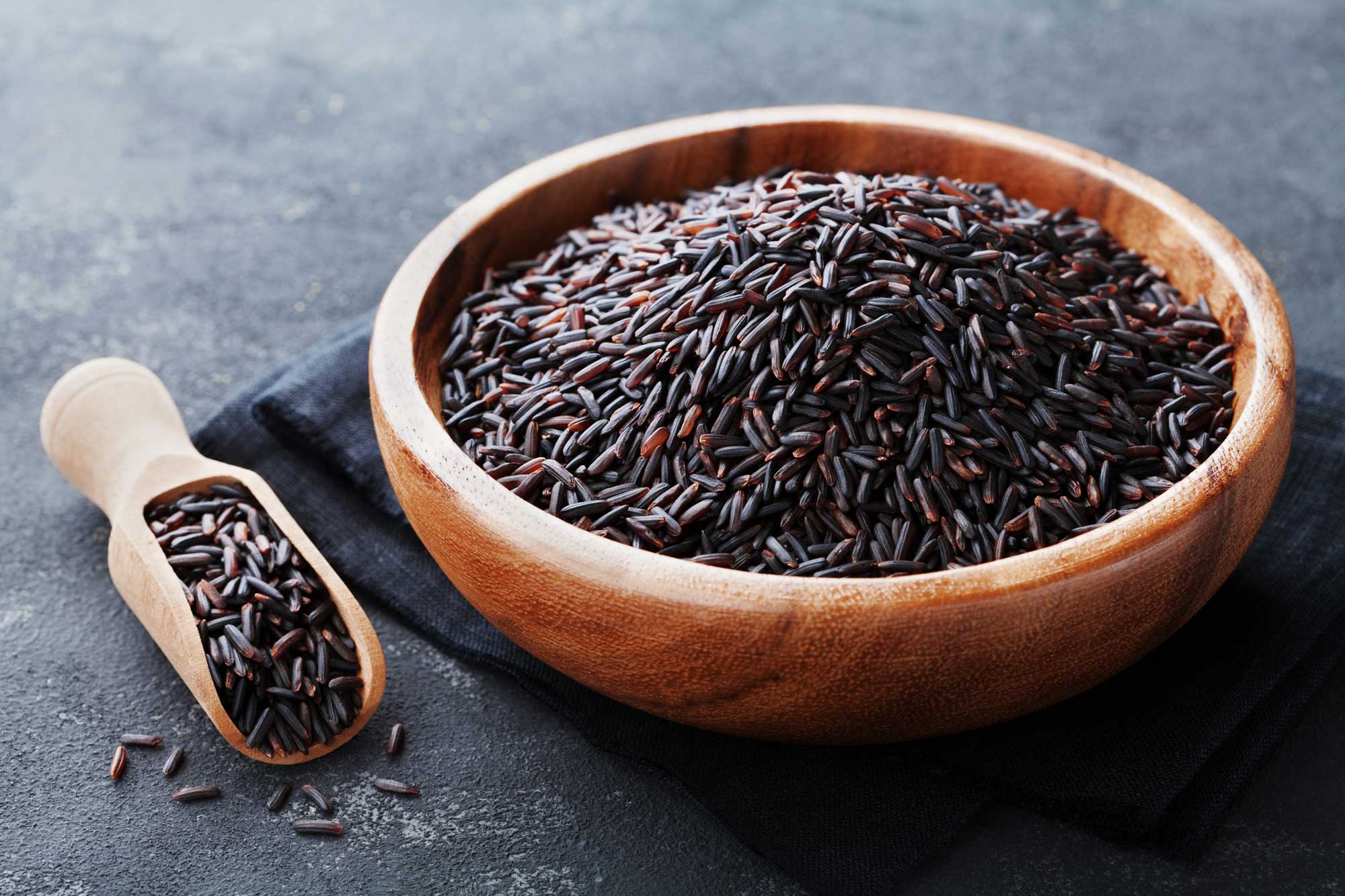It is not yet very common on our tables but lately nutritionists and fitness enthusiastic have started to recommend a certain variant of rice called “the black rice”.
The deep black/purple hue of this rice is a marker of its high antioxidant properties. The outermost layer of the grain (the bran and the hull), contains very high amounts of an antioxidant called anthocyanin with some amazing properties.
Black rice seems too good to be true: it is delicious, it is healthy, and it is aesthetically pleasing.
Let’s look into this amazing food.
In ancient China, it was said that black rice was so unique and nutritious that it was forbidden for all but royalty. Black rice used to be cultivated but only for the elite classes, in limited quantities and under strict surveillance. The common folk were prohibited from growing or consuming it, this is why it was called – the forbidden rice.
Today we can find several varieties of black rice coming from Thailand, Indonesia, China, Japan and India. Some varieties are short-grained whereas others are long-grained. Long-grained rice is typically preferred for their lower glycemic index, meaning that it will have a lower impact on raising your blood sugar.
As mentioned before, the deep black/purple hue of this rice is due to high amounts of the antioxidant-anthocyanin in the outermost layer of the grain.
Anthocyanins are plant pigments found in a variety of blue and purple foods, like blueberries, onions, tomatoes, pomegranates, kidneys beans and purple sweet potatoes. The amount of anthocyanin contained in black rice is however the higher than any other grain such as red rice or red quinoa.
Anthocyanins are a type of flavonoid, a group of natural substances found in fruits, vegetables, grains, bark, roots, stems, flowers, tea and wine. Flavonoids are now considered as an indispensable component in a variety of pharmaceutical, medicinal and cosmetic applications because of to their anti-oxidative, anti-inflammatory properties coupled with their capacity to modulate key cellular enzyme function.
What are the benefits of black rice?
1. Overall good source of several nutrients
- White vs. Black. White rice and other refined grains are stripped of their high nutrient content and beneficial properties in the milling process. Majority of the nutrients of rice are present in the outer layer that are only retained in whole grains. Since black rice doesn’t undergo any refining or processing, it is able to retain its high content in antioxidants, vitamins, minerals, and fibers.
- Protein. Compared with other types of rice, black rice is one of the highest in protein with ca. 9 g/100 g. To put in prospective, brown and red rice contains 8 g and 7 g of protein respectively for the same serving, whereas refined white rice contains only 6.8 g of protein. There are 18 amino acids in black rice, with a mix of essential and non-essential types. It might not have the full spectrum of amino acids compared to e.g., animal based-food but when combined e.g., with beans, it remains an excellent plant-based protein source.
- Iron. It is also a good source of iron providing approximately 14% of the Daily Value per 100 g of uncooked rice.
- Gluten free. It is also naturally gluten free and can be a good option for those of you that are gluten sensitive.
- The list continues with Zinc, Vitamin E, Vitamin B2 and B3, Copper, Magnesium, Manganese and more.
2. Rich in Antioxidants
Antioxidants are compounds that protect your cells against oxidative stress caused by molecules known as free radicals. They’re important, as oxidative stress has been associated with an increased risk of several chronic conditions, including heart disease, Alzheimer’s, certain forms of cancer, aging, etc.
Research shows that black rice contains over 23 types of antioxidants and has the highest antioxidant activity of all rice varieties. Be aware that many antioxidant compounds such as anthocyanin, Vitamin C, etc are sensitive to many factors such as pH, storage temperature. Light and heat. This means that cooking will unfortunately reduced the amount of antioxidants. In case of black rice cooking for 35 min is known to reduce the amount of Anthocyanin up to 80%.
3. Heart health
Anthocyanin and flavonoids in general are associated with cardiovascular disease prevention because of their antioxidant and anti-inflammatory properties [1, 2]. A Danish study found that moderate habitual intake of flavonoids is inversely associated with cardiovascular- and cancer-related mortality [3]. Flavonoids have shown to be effective at preventing platelet aggregation in animal studies. Platelet aggregation is a known component in heart disease because it contributes to forming blood clots that can lead to strokes and other problems.
Additional research found that supplementing anthocyanin for 12 weeks resulted in improved HDL and reduction in LDL cholesterol [4, 2].
4. Good Source of Fiber
The black rice has about 3 grams of fiber per half cup serving. This rich fiber content helps regulate the bowel movements, prevent constipation, diarrhea and bloating. Fibre also gives your body a satiated feeling after consumption which prevents you from binging into other fatty food, thus aiding weight loss.
5. Improved Eye Health
Black rice contains high amounts of lutein and zeaxanthin, two carotenoids known for their role in supporting eye health [5]. These antioxidants help to protect the cells in your eyes and to reduce the effects of ultraviolet (UV) radiation [6].
Things to Watch Out For
Black rice, like all rice, may contain arsenic, a toxin that is absorbed from soil. Arsenic amounts are largely determined by where rice is grown. To reduce your chances of eating arsenic, rinse the dry rice before cooking (10-30% reduction [7]). You can also cook the rice in excess water and drain off whatever the rice hasn’t absorbed by the time it’s considered “cooked.” White rice has less arsenic contamination because its outer layer is removed. If you have concerns about arsenic in your rice, rinsing it several times prior to cooking may help to remove it.
References
[1] https://pubmed.ncbi.nlm.nih.gov/28620474/
[2] https://pubmed.ncbi.nlm.nih.gov/26011910/
[4] https://pubmed.ncbi.nlm.nih.gov/19640950/
[3] https://pubmed.ncbi.nlm.nih.gov/31409784/
[5] https://pubmed.ncbi.nlm.nih.gov/23871029/
[6] https://www.ncbi.nlm.nih.gov/pmc/articles/PMC6164534/
[7] https://pubmed.ncbi.nlm.nih.gov/16876928/

